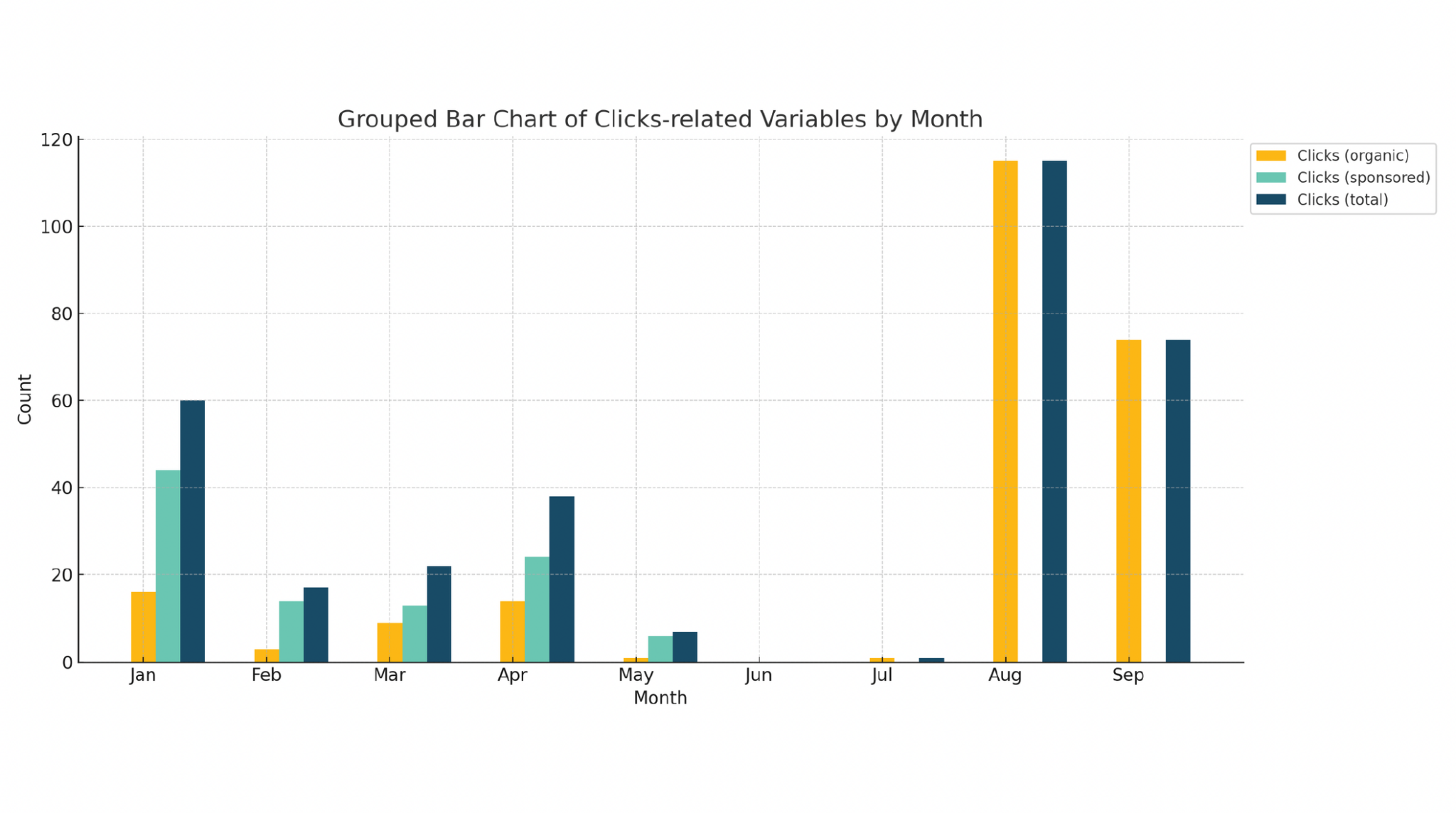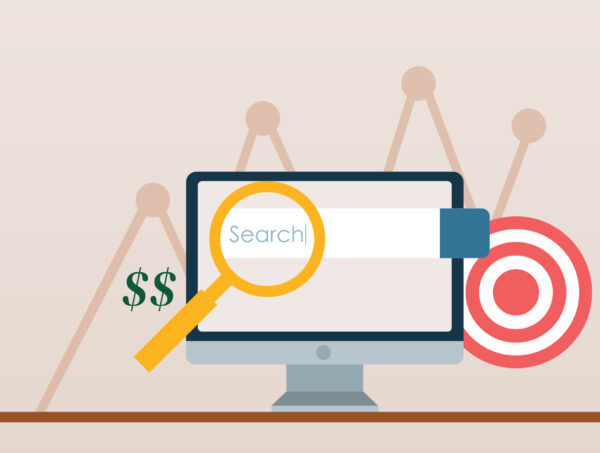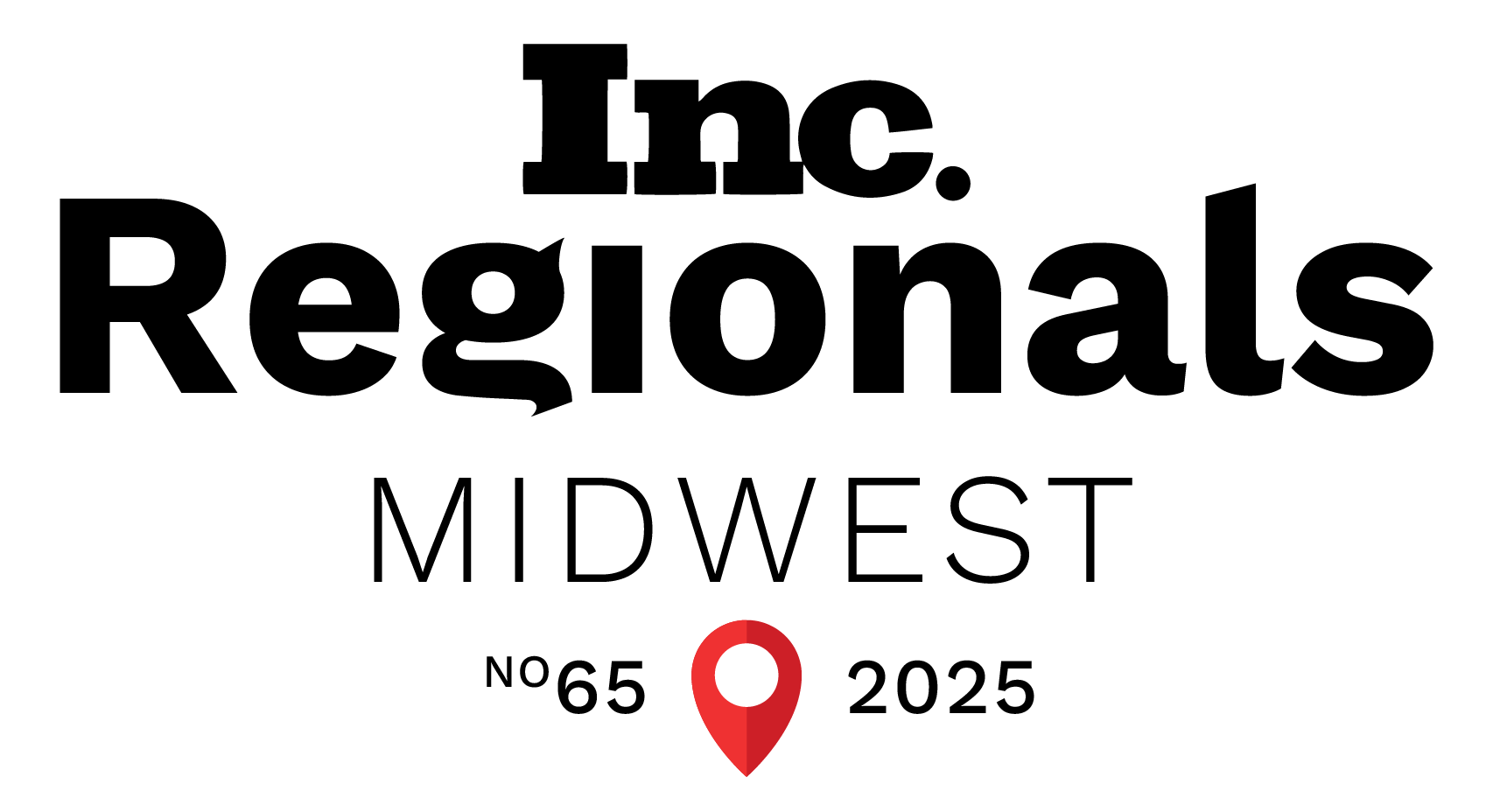

What Is AI Marketing?

Marketing strategy is changing fast.
It’s hard to think that just a little over a decade ago, we were all trying to figure out how to launch and manage our first Facebook business pages. And our websites were still relatively new, with some businesses just starting to build their first ones. At that time, inbound methodology and digital marketing concepts were still emerging.
Fast forward to today, and in the last 10-15 years, we’ve crafted effective digital strategies that deliver tangible results for businesses. And yet, those strategies are constantly evolving in both big and small ways. We should never approach any marketing strategy assuming what works today will still work tomorrow.
Enter AI. This new technology has only intensified the rapid pace of change we expect from the digital landscape.
What Is AI Marketing?
AI Marketing integrates artificial intelligence technologies into various marketing strategies and operations. AI marketing encompasses multiple applications, including chatbots, targeted advertising, content generation, and data analysis.
Key Capabilities and Examples of AI Marketing
AI marketing offers several capabilities that enable marketers to drive results and enhance customer experience. Let’s explore some of the key capabilities and examples of AI marketing:
Content Personalization
Content personalization tailors digital content to users’ preferences, behaviors, and needs. Instead of presenting a one-size-fits-all narrative, businesses modify or generate content based on information they’ve gathered about individual users.

Later, they receive an email with relevant laptop information, and they may also see a social media ad about the exact laptop they spent the longest time looking at.
Understanding individual customer preferences is no small feat. With countless factors influencing decisions, creating a personalized experience that resonates with each customer’s unique interests and needs is an intricate challenge.
Amazon, a leader in utilizing AI for content personalization, acknowledges the complexity of this task. They explain, “Understanding customers’ preferences can be challenging in a noisy environment where customers may have several potential factors motivating a decision.“
Unfortunately, transforming static websites into dynamic experiences isn’t something you can ask ChatGPT to do for you. However, many tools leverage AI to help you implement this type of advanced digital marketing strategy.
Even if you’re starting with personalization and need more time to be ready for a fully dynamic marketing strategy, you can use generative AI tools to help you transform content for different buyer personas.
For example, you might segment your email list based on products relevant to the customer. Then, you can send different or modified messages to each segment to increase open rates.
Data Analytics
Most companies can access customer data, websites, social media, etc. But “What do they do with that data?” is the real question. For many businesses, the honest answer is…not a whole lot. They might collect some basic performance numbers, but turning that raw data into meaningful insights? That’s often where the trail goes cold.
That’s where AI comes into play. AI tools can collect and analyze large volumes of data from various marketing campaigns, providing valuable insights and predicting campaign outcomes. By leveraging historical data, AI can also optimize marketing strategies and save campaign development and optimization time.
Let’s say you have data from social media performance comparing this year and last year that you exported from Linkedin. Typically, you’d have to do all the analysis using Google Sheets or Excel. Now, you can upload the data to ChatGPT’s code interpreter tool and have it analyze the information for you.
For example, you can ask it to “create a chart showing the organic clicks for each time period.” Here is a chart generated by ChatGPT displaying an increase in organic and total clicks after Metric started managing City Labs‘ LinkedIn account in August 2023:

A data analysis task that could have taken an hour or more took only a few moments. You can even customize the chart by asking ChatGPT to create the colors you want, change the graph’s title, and make other formatting changes.
This task is relatively simple. However, you can do more complex analyses like downloading all the data for your website from Google Analytics and determining different customer segments based on purchasing behavior, preferences, demographics, etc. The possibilities are endless.
Content Generation
By far, the most common use case for generative AI in marketing right now is content generation. Yes, ChatGPT, Claude.ai, and other similar tools can significantly improve efficiency when it comes to content creation. However, we have to tread carefully with this new capability.
There is just something about AI content that makes it easy for us to spot it in the wild. Something feels…off.
For example, when it comes to AI art, we laugh when someone has two noses or some other obvious issue, but writing is a bit more ambiguous. We notice a problem, but we can’t exactly explain it.
There is a tone that comes with unedited and unaltered AI-generated content, a tone that is best described as no tone. Even when you ask for an output like a “conversational” tone, it’s still too broad for the AI to generate something interesting and human-like.
The best approach to content generation is to provide the tool with several examples of what “good” looks like before you ask for it to write anything. Additionally, you should provide a detailed writing style guide that explains your tone and instructions for style and formatting.
Conversational AI isn’t about one perfect prompt; it’s about iterating and providing robust context.
Chatbots
Chatbots are AI-powered virtual assistants capable of simulating human conversation and responding immediately to user inquiries. They can be as simple as predefined answers to specific questions or as complex as a machine-learning model that learns and evolves with each interaction.
Chatbots are always on duty, ready to answer customer questions around the clock. Chatbots can handle it all without human intervention, whether it’s about product details, shipping information, or troubleshooting.
As with everything AI, there is a balance. A chatbot can be extremely convenient if you want a quick answer. But it can also be incredibly frustrating if you are working with a poorly trained bot that can’t understand or properly address your needs.
Often, companies will first implement a chatbot for their internal teams. For example, you could build a chatbot with answers to common questions or objections to help a sales team improve their approach.
Then, as the chatbot improves, it can directly similarly serve customers. The key to a successful chatbot is quality data and excellent conversational design.
Keyword Research and SEO
Keyword research is a cornerstone of a quality digital marketing strategy. The first way AI tools can help is by accelerating the brainstorming process.
Suppose your company’s product is a virtual wellness program. Maybe you don’t know where to start finding keywords to help the website rank on search engines. You can ask a generative AI tool to “give me keywords for a website that promotes a virtual wellness program.”
More specifically, you can ask for primary keywords, long-tail keywords, local keywords, trending wellness topics, inclusive keywords, etc. Just because ChatGPT or Claude gives you a list of keywords doesn’t mean the work is done. Now, you’ll need to use a tool like SEMrush to determine which keywords are worth pursuing based on traffic volume, keyword difficulty, and cost-per-click (CPC) data.
You might also study what type of content already has the top spots on Google and look for the “people also asked” section.
After your initial brainstorming, you might have a large Google Sheet full of potential keywords. You could input that data into ChatGPT’s code interpreter to help you analyze the data and further refine your opportunities based on different parameters.
You can then choose a generative AI tool to help you brainstorm topic clusters for content that could help you rank for your target keywords. Finally, AI can review your content drafts to determine if it’s fully optimized for search engine optimization (SEO).
These are just a few examples of how AI marketing can transform your digital marketing strategies. The applications of AI in marketing continue to evolve, offering marketers new ways to engage with their target audiences and drive results.
Benefits of AI in Marketing
So, what exactly can AI marketing do for you? Turns out, quite a lot.
By automating routine tasks and revealing hidden insights, AI allows marketers to work smarter and drive better results. Let’s explore some of the key advantages:
Increased Efficiency
One of the most significant benefits of AI is how it can help marketers work more efficiently by automating repetitive, time-consuming tasks. AI can free up team members’ time and mental bandwidth for more strategic thinking and creativity.
For example, it can instantly generate dozens of on-brand social media posts or emails. AI can also handle data-intensive work like lead scoring, personalization, and campaign analysis.
Data-Driven Decision Making
It’s no secret the Metric team loves metrics. We’re excited that these AI tools are making it easier for businesses to leverage their valuable data in new ways.
Combining huge datasets with predictive modeling allows AI to identify trends, patterns, and correlations that offer actionable intelligence. This powers data-driven strategies around content, personalization, channel optimization, and more.
Hyper-Personalized Experiences
One-size-fits-all customer experiences aren’t cutting it anymore. People expect companies to tailor their messaging to make their products and services relevant to their wants and needs. Luckily, AI makes it easier than ever to analyze large sets of customer data and design dynamic content. As a result, companies can improve their engagement rates.
Cost Reduction
Time is money, and AI saves a lot of it, if nothing else. AI marketing tools can help reduce costs by automating processes that require manual effort. Marketers can streamline their workflows and reduce operational costs by automating tasks like data analysis and accelerating content generation.
Disadvantages of AI Marketing
AI isn’t just sunshine and rainbows. There are real risks to this new technology—some known and some unknown. We’ve outlined a few areas to consider as you integrate AI into your marketing strategies.
Data Privacy
Since AI marketing requires collecting a lot of personal information, it’s vital to have strong security measures. This is about more than avoiding legal trouble; it’s about respecting your customers’ privacy. And the key to success is transparency.
Your customers need to know that you won’t misuse their information. Be open about what data you’re collecting and why. Customers who understand how their information helps provide a better service are more likely to trust you.
Algorithmic Bias
As AI is only as unbiased as the data it’s trained on, there is a risk of perpetuating biases if the algorithms are not developed carefully.
For example, if an e-commerce site only has a purchase history from a narrow customer segment, the AI’s product recommendations may not appeal to other users.
We must put in the effort to ensure our AI-driven strategies are fair. This way, we keep our marketing efforts on the right track and protect our brand’s reputation.
Continuous Human Oversight
Many businesses may see opportunities to reduce their workforce significantly. While we don’t know exactly how AI will evolve in the coming months, we do know that you need human oversight to ensure accuracy. AI makes mistakes, and the experts on your team can find and fix those errors.
Not to mention, with the rate of change, you need humans to help with integration efforts. The work they do will determine the effectiveness of your AI strategies.
Organizational Buy-In and Investment
Implementing AI requires buy-in across the organization and a willingness to invest resources. Marketing leaders must make a strong business case and address common concerns upfront.
You’ll need to clearly communicate the benefits of AI for marketing, such as increased efficiency, insights, and personalization. It’s also important to tie AI initiatives to revenue growth and cost savings goals that can help secure executive sponsorship.
Advice for Brands Considering AI Marketing
For brands considering integrating AI into their marketing, you’ll need to approach it strategically.
Here are some tips to help you get started:
- Choose one small, meaningful task that AI can improve. Don’t go all in yet. Find a quick win that requires minimal investment to build momentum and buy-in. Maybe AI can help with lead scoring or social media engagement.
- Once you identify the task, research tools that can help. There are AI solutions for many marketing workflows beyond ChatGPT. Make sure to find the right tool for the job. You may need multiple tools depending on use cases.
- Take stock of your data. AI is only as good as the data it’s trained on. Inventory relevant first-party data you can feed into the AI tools. You may need to implement better data capture.
- Test and iterate. Experimentation is key. Give yourself room to try different applications of AI and tweak based on results. Not every test will succeed, and that’s okay. Refine your approach over time.
With this measured, task-based approach, you can build AI marketing capabilities while managing risks. The goal is to integrate AI thoughtfully to amplify results.
Start small, learn fast, and scale what adds value.
The Future of AI Marketing
No one saw it coming—the profound impact one tool, ChatGPT, would have on 2023. But it was the catalyst that helped companies of all sizes finally recognize AI’s potential.
AI marketing is no longer a futuristic concept but a present reality. One of the exciting prospects for the future of AI marketing is its seamless integration into marketing stacks, a collection of software tools and technologies that marketers use to execute, analyze, and improve their marketing efforts. This integration will enable marketers to leverage AI tools across various channels and platforms, creating a more cohesive and intelligent marketing ecosystem.
But it doesn’t stop there. The ripple effect of AI marketing is reshaping the very core of the industry. The marketers of tomorrow will need to delve into the depths of AI, understand its nuances, and embrace its applications. Far from being a looming threat, this evolution in the field is a wide-open door, an invitation to grow, innovate, and redefine the boundaries of what’s possible in the profession.
Ready to Transform Your Marketing Strategy Using AI?
Embrace the future with Metric. Our expert team is at the forefront of integrating AI technologies into marketing strategies, driving results that resonate with your unique business goals. From content personalization to data-driven decision-making, we provide tailored solutions that leverage AI for efficiency, personalization, and innovation.
Connect with our team today and discover how AI can revolutionize your marketing, reduce costs, and create hyper-personalized experiences your customers will love. Let’s redefine the boundaries of what’s possible together!
That's great and all, but...
Looking for real examples?
Ready to Inquire?








